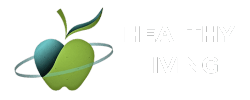The keto diet is a popular way of eating that can help you lose weight, improve your health, and enjoy delicious food. But how do you start a keto diet? What are the benefits and challenges of this low-carb, high-fat lifestyle? And what are some tips and tricks to make it easier and more enjoyable?
In this article, we will answer these questions and more. We will provide you with a comprehensive guide to the keto diet for beginners, covering everything from the basics of ketosis to the best foods to eat and avoid. We will also share some practical advice and resources to help you succeed on your keto journey.
What is the keto diet and how does it work?
The keto diet is a way of eating that limits carbohydrates and increases fat intake. By doing so, it forces your body to switch from burning glucose (sugar) to burning ketones (fat) for energy. This metabolic state is called ketosis, and it has many benefits for your health and weight loss.
When you are in ketosis, your appetite is reduced, your blood sugar and insulin levels are lowered, and your body becomes more efficient at using fat as fuel. This can help you lose excess body fat, especially around the belly, and prevent or reverse many chronic diseases, such as diabetes, heart disease, and epilepsy12.
To enter and maintain ketosis, you need to keep your carb intake very low, usually below 20-50 grams per day. This means avoiding foods like bread, pasta, rice, potatoes, fruits, and sweets, and focusing on foods like meat, fish, eggs, cheese, butter, oils, nuts, seeds, and low-carb vegetables.
How to start a keto diet: a simple step-by-step plan
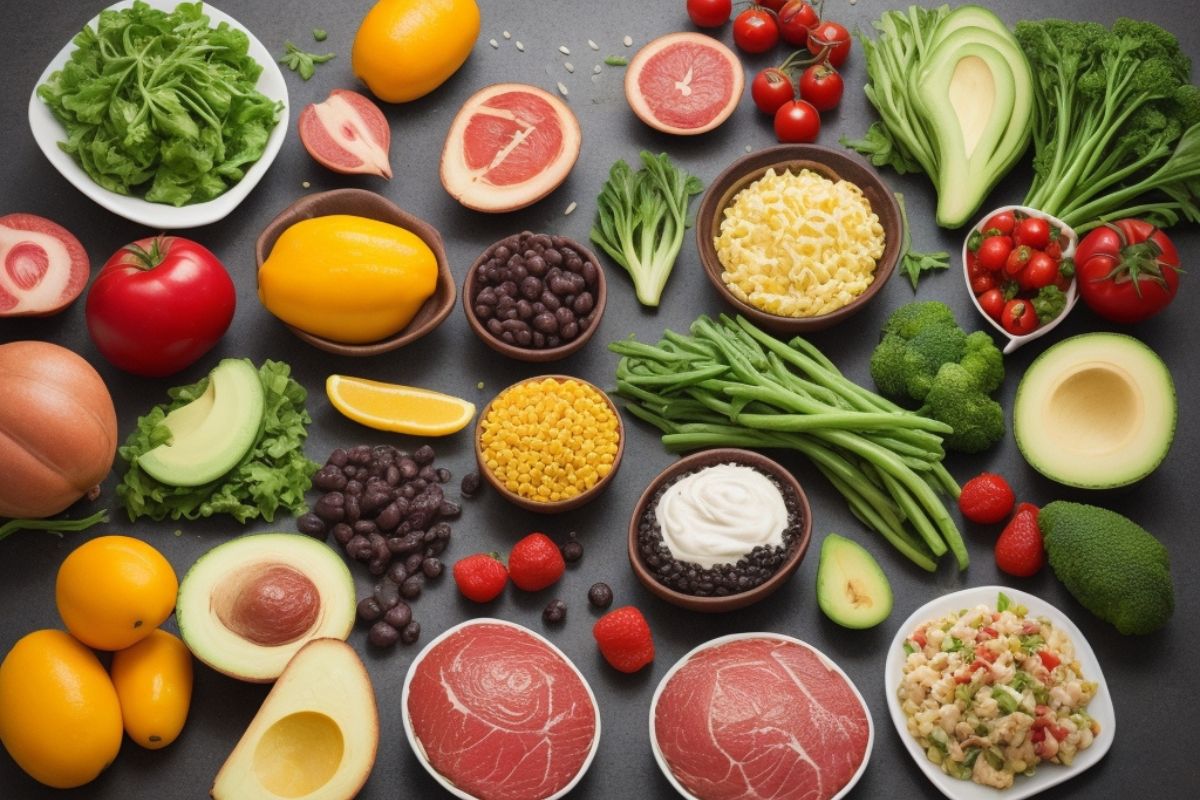
Starting a keto diet can seem daunting, but it doesn’t have to be. Here is a simple step-by-step plan to help you get started:
- Set your goals and track your progress. Before you begin, it’s important to have a clear idea of why you want to try keto and what you hope to achieve. Do you want to lose weight, improve your health, or both? How much weight do you want to lose, and how fast? How will you measure your success and track your progress? Having specific and realistic goals can help you stay motivated and focused throughout your keto journey. You can use a keto calculator to estimate your calorie and macronutrient needs, and a keto app or tracker to monitor your food intake and ketone levels.
- Clean out your pantry and fridge. The next step is to get rid of all the high-carb foods that might tempt you or sabotage your keto efforts. This includes bread, pasta, rice, cereals, crackers, cookies, cakes, candy, soda, juice, milk, yogurt, fruit, and any other foods that contain added sugar or starch. You can donate them, give them away, or throw them out. You can also check the labels of any packaged or processed foods you have, and look for hidden carbs or sugars. If you are not sure whether a food is keto-friendly or not, you can use a keto food list or a keto app to check its carb content and ingredients.
- Stock up on keto-friendly foods. Once you have cleared out the high-carb foods, it’s time to fill your pantry and fridge with keto-friendly foods that will nourish your body and satisfy your taste buds. These include meat, poultry, fish, eggs, cheese, butter, cream, oils, nuts, seeds, and low-carb vegetables. You can also buy some keto staples, such as almond flour, coconut flour, erythritol, stevia, xylitol, monk fruit, dark chocolate, and keto bars or snacks. You can find these products online or in most health food stores. You can also use a keto grocery list or a keto meal plan to help you plan your shopping and meals.
- Plan your meals and snacks. Planning your meals and snacks ahead of time can make your keto transition easier and more enjoyable. It can also help you avoid hunger, cravings, and overeating. You can use a keto meal plan to get some ideas and inspiration, or you can create your own menu based on your preferences and needs. A typical keto meal consists of a protein source, a fat source, and a low-carb vegetable. For example, you can have a steak with butter and broccoli, a salmon with cream sauce and spinach, or a chicken salad with avocado and lettuce. A typical keto snack consists of a handful of nuts, a piece of cheese, a hard-boiled egg, or a keto bar. You can also have some keto-friendly drinks, such as water, tea, coffee, or bone broth.
- Start your keto journey and enjoy the benefits. The final step is to start your keto journey and enjoy the benefits. You can choose to start gradually, by reducing your carbs over a few days or weeks, or you can start abruptly, by going keto overnight. Either way, you will soon notice some changes in your body and mind. You may experience some keto flu symptoms, such as headache, fatigue, nausea, or constipation, as your body adapts to ketosis. These are usually mild and temporary, and can be alleviated by drinking enough water, adding more salt and electrolytes to your diet, and eating more fat. You may also experience some.
7 Keto Diet Tips for Beginners: How to Start and Succeed
The keto diet is a popular low-carb, high-fat diet that can help you lose weight, improve your health, and boost your brain function. But how do you start a keto diet and stick to it? What are the benefits and risks of this diet? And what are some common mistakes to avoid?
In this article, you’ll learn everything you need to know about the keto diet for beginners, including:
- What is the keto diet and how does it work?
- What are the benefits and risks of the keto diet?
- What foods can you eat and avoid on the keto diet?
- How to plan and prepare your keto meals
- How to track your progress and adjust your keto macros
- How to deal with keto side effects and challenges
- How to enjoy the keto lifestyle and stay motivated
Let’s get started!
What is the keto diet and how does it work?
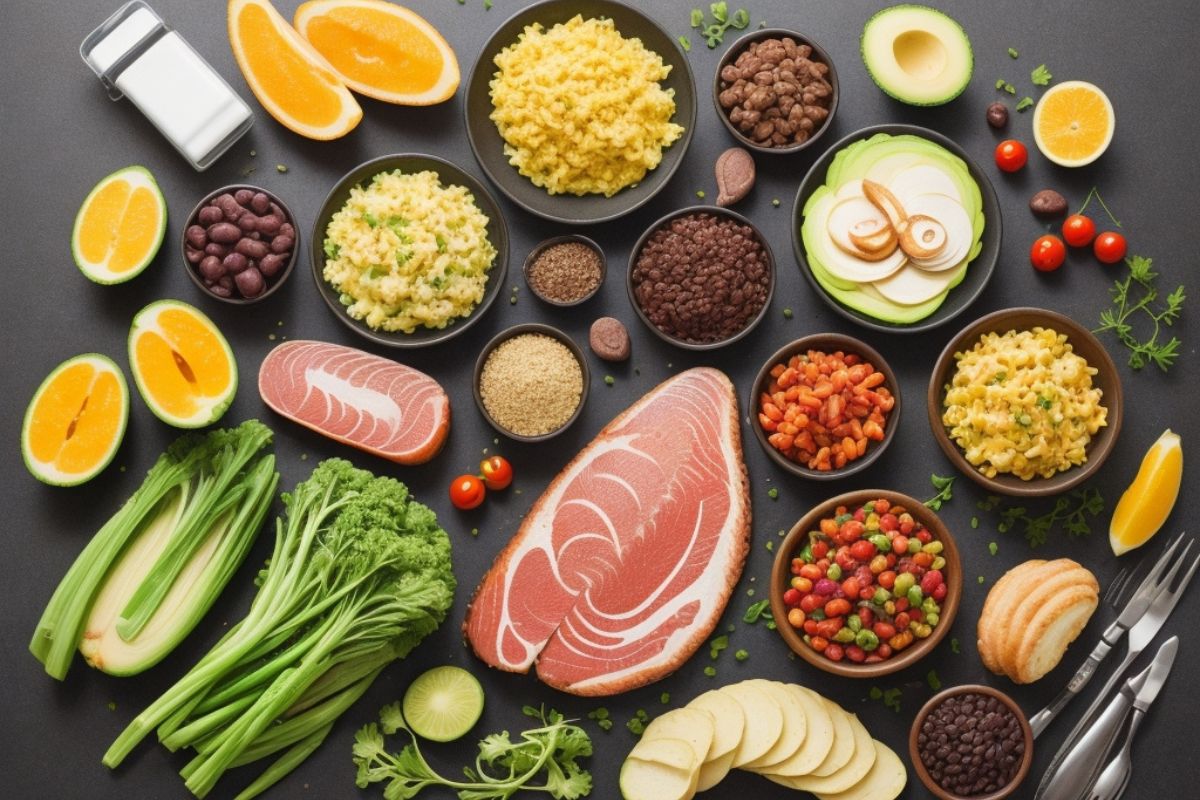
The keto diet is a low-carb, high-fat diet that aims to put your body into a metabolic state called ketosis. Ketosis is when your body burns fat instead of glucose (sugar) for energy. This can help you lose weight, reduce your appetite, and improve your health.
To enter ketosis, you need to limit your carb intake to about 20-50 grams per day, depending on your individual needs and goals. You also need to increase your fat intake to about 70-80% of your calories, and moderate your protein intake to about 20-25% of your calories.
When you eat this way, your liver converts fat into ketone bodies, which are molecules that can be used by your brain and other organs as an alternative fuel source. Ketones have many benefits, such as:
- Suppressing hunger hormones and increasing satiety hormones, which can help you eat less and lose weight
- Enhancing cognitive function, memory, and mood, by providing a steady and efficient energy supply to your brain
- Reducing inflammation, oxidative stress, and insulin resistance, which can lower your risk of chronic diseases, such as diabetes, heart disease, and cancer
- Boosting your athletic performance, endurance, and recovery, by sparing your muscle glycogen and increasing your fat oxidation
However, ketosis is not easy to achieve and maintain. It requires a lot of discipline, planning, and adaptation. You also need to be aware of the potential side effects and challenges of the keto diet, such as:
- Keto flu, which is a temporary set of symptoms that can occur when you first start the keto diet, such as headache, fatigue, nausea, and constipation
- Keto breath, which is a fruity or metallic smell that can come from your mouth when you produce ketones
- Keto rash, which is a rare but possible skin reaction that can cause itching and redness
- Ketoacidosis, which is a dangerous condition that can occur in people with type 1 diabetes or alcoholism, when the level of ketones in the blood becomes too high and causes the blood to become acidic
These side effects and challenges can be prevented or managed by following some simple tips and strategies, which we’ll cover later in this article.
What are the benefits and risks of the keto diet?
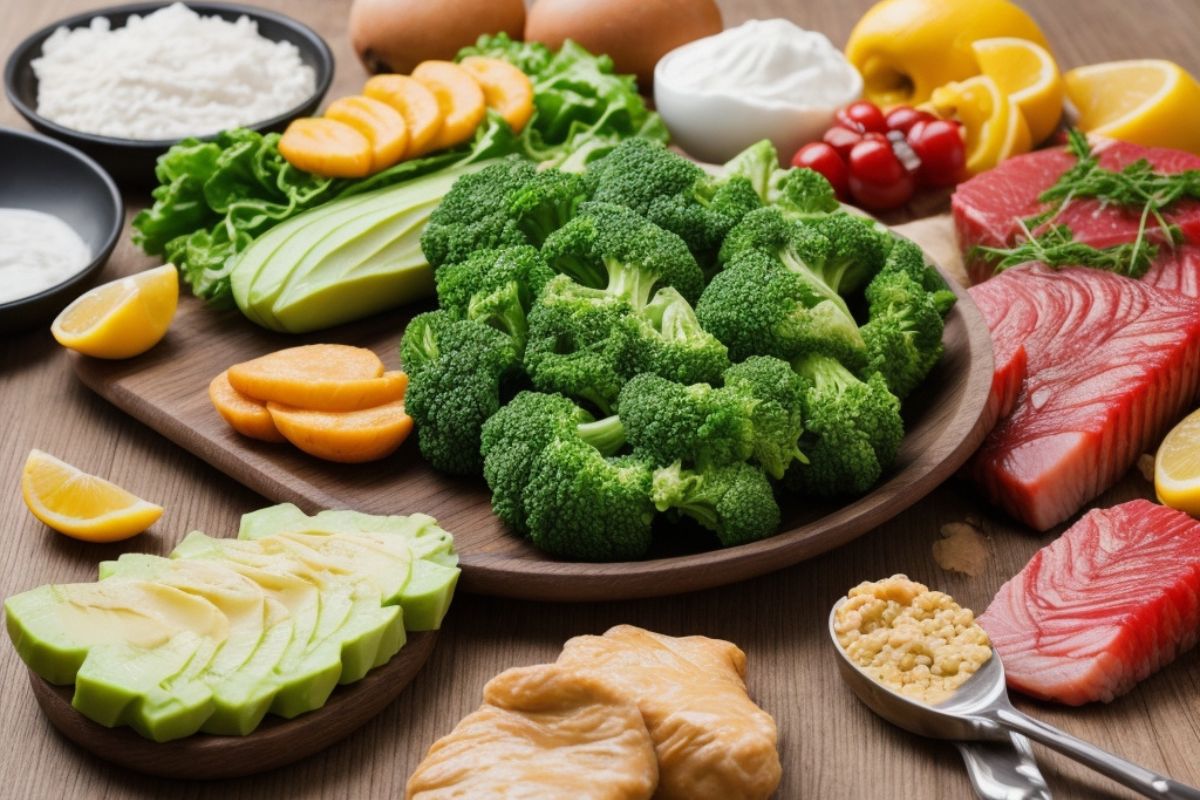
The keto diet has been shown to have many benefits for various health conditions, such as:
- Obesity and overweight: The keto diet can help you lose weight and body fat, especially in the abdominal area, by reducing your appetite, increasing your metabolism, and preserving your muscle mass
- Type 2 diabetes and prediabetes: The keto diet can help you lower your blood sugar and insulin levels, improve your insulin sensitivity, and reverse your diabetes or prevent it from developing
- Epilepsy and seizures: The keto diet can help you reduce the frequency and severity of your seizures, especially in children with drug-resistant epilepsy
- Alzheimer’s disease and dementia: The keto diet can help you protect your brain from cognitive decline, improve your memory and mental clarity, and slow down the progression of Alzheimer’s disease
- Parkinson’s disease and other neurological disorders: The keto diet can help you improve your motor function, reduce your tremors and stiffness, and alleviate your symptoms of Parkinson’s disease and other neurological disorders
- Polycystic ovary syndrome (PCOS) and infertility: The keto diet can help you balance your hormones, restore your ovulation and menstrual cycles, and improve your fertility and chances of getting pregnant
- Acne and skin problems: The keto diet can help you clear your skin, reduce your inflammation, and prevent acne breakouts and other skin problems
However, the keto diet is not for everyone. It may have some risks or drawbacks for certain people, such as:
- People with type 1 diabetes or pancreatic insufficiency: The keto diet may increase the risk of ketoacidosis, which can be life-threatening if not treated promptly. People with type 1 diabetes or pancreatic insufficiency should consult their doctor before starting the keto diet and monitor their ketone levels closely
- People with kidney disease or kidney stones: The keto diet may increase the risk of kidney problems, such as kidney stones, kidney damage, or kidney failure. People with kidney disease or kidney stones should consult their doctor before starting the keto diet and limit their protein intake
- People with liver disease or gallbladder problems: The keto diet may increase the risk of liver problems, such as fatty liver, liver damage, or liver failure. People with liver disease or gallbladder problems should consult their doctor before starting the keto diet and limit their fat intake
- People with heart disease or high cholesterol: The keto diet may increase the risk of heart problems, such as arrhythmias, heart attack, or stroke. People with heart disease or high cholesterol should consult their doctor before starting the keto diet and choose healthy fats, such as olive oil, avocado, nuts, and seeds
- People with thyroid disorders or hormonal imbalances: The keto diet may affect the thyroid function and hormone levels, which can cause symptoms such as fatigue, hair loss, mood swings, or menstrual irregularities. People with thyroid disorders or hormonal imbalances should consult their doctor before starting the keto diet and monitor their thyroid and hormone levels regularly
- People with eating disorders or a history of disordered eating: The keto diet may trigger or worsen eating disorders, such as anorexia, bulimia, or binge eating. People with eating disorders or a history of disordered eating should consult their doctor and a therapist before starting the keto diet and seek professional help if they experience any signs of relapse
- Pregnant or breastfeeding women: The keto diet may not provide enough nutrients and calories for the mother and the baby, and may affect the milk production and quality. Pregnant or breastfeeding women should consult their doctor before starting the keto diet and follow a balanced and varied diet that meets their needs and preferences
The bottom line is that the keto diet can be beneficial for many people, but it may not be suitable or safe for everyone. Always consult your doctor before starting the keto diet, especially if you have any medical conditions or take any medications. And remember, the keto diet is not a one-size-fits-all solution. You can always modify it to fit your goals, needs, and preferences.
What foods can you eat and avoid on the keto diet?
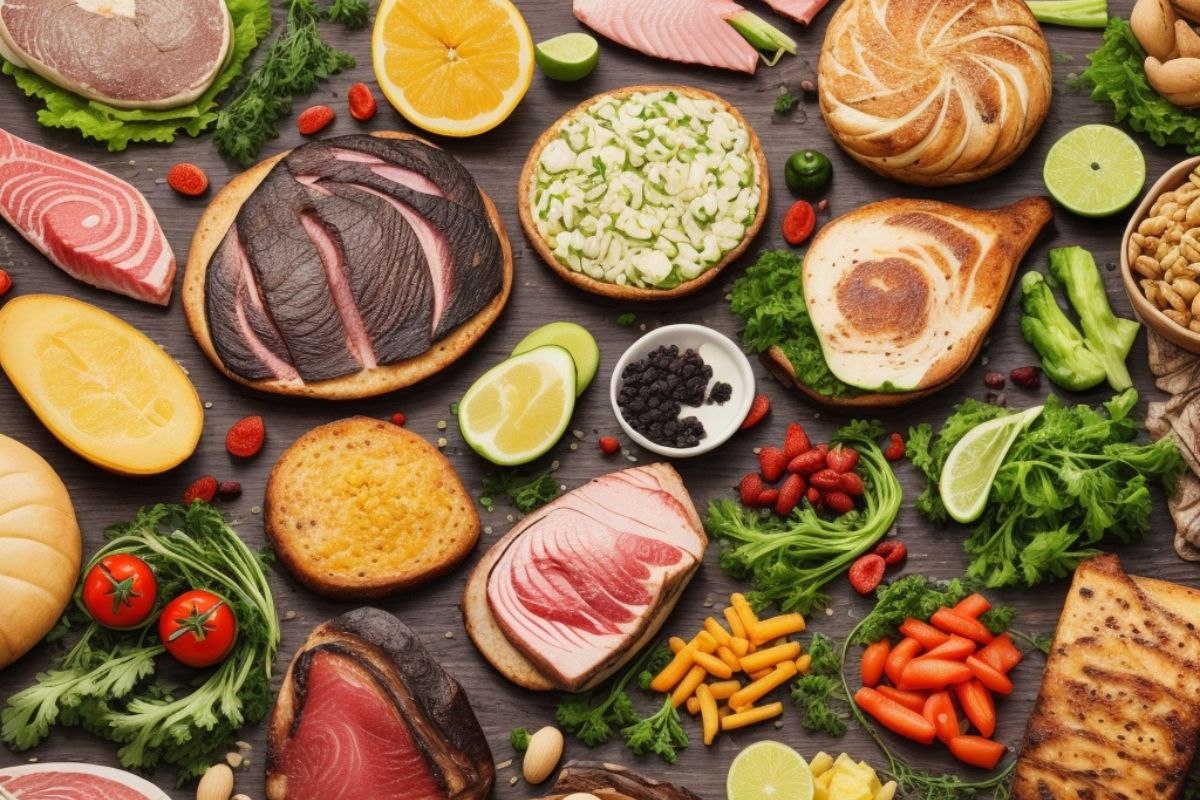
The keto diet is based on eating foods that are low in carbs, high in fat, and moderate in protein. Here are some examples of foods that you can eat and avoid on the keto diet:
Foods to eat on the keto diet:
- Meat: Beef, pork, lamb, chicken, turkey, etc.
- Fish and seafood: Salmon, tuna, shrimp, sardines, etc.
- Eggs: Whole eggs, egg whites, omelets, etc.
- Cheese: Cheddar, mozzarella, brie, feta, etc.
- Cream and butter: Heavy cream, sour cream, cream cheese, butter, ghee, etc.
- Oils and fats: Olive oil, coconut oil, avocado oil, MCT oil, etc.
- Nuts and seeds: Almonds, walnuts, pistachios, sunflower seeds, pumpkin seeds, etc.
- Nut and seed butters: Peanut butter, almond butter, tahini, etc.
- Avocados: Whole avocados, guacamole, etc.
- Low-carb vegetables: Leafy greens, broccoli, cauliflower, zucchini, mushrooms, etc.
- Low-carb fruits: Berries, lemons, limes, etc.
- Herbs and spices: Basil, oregano, rosemary, thyme, garlic, ginger, etc.
- Condiments and sauces: Mayonnaise, mustard, salsa, pesto, etc.
- Sugar-free drinks: Water, sparkling water, coffee, tea, etc.
- Keto-friendly sweeteners: Stevia, erythritol, monk fruit, etc.
- Keto-friendly snacks: Dark chocolate, pork rinds, cheese crisps, etc.
Foods to avoid on the keto diet:
- Grains: Wheat, rice, oats, corn, barley, etc.
- Starchy vegetables: Potatoes, sweet potatoes, carrots, peas, etc.
- Legumes: Beans, lentils, chickpeas, soybeans, etc.
- High-carb fruits: Bananas, apples, oranges, grapes, etc.
- Sugar and sweets: Honey, maple syrup, agave nectar, candy, cookies, cakes, etc.
- Milk and yogurt: Cow’s milk, goat’s milk, soy milk, flavored yogurt, etc.
- Juices and smoothies: Fruit juice, vegetable juice, smoothies, etc.
- Alcohol: Beer, wine, liquor, cocktails, etc.
- Processed and packaged foods: Chips, crackers, cereals, bread, pasta, pizza
How to plan and prepare your keto meals
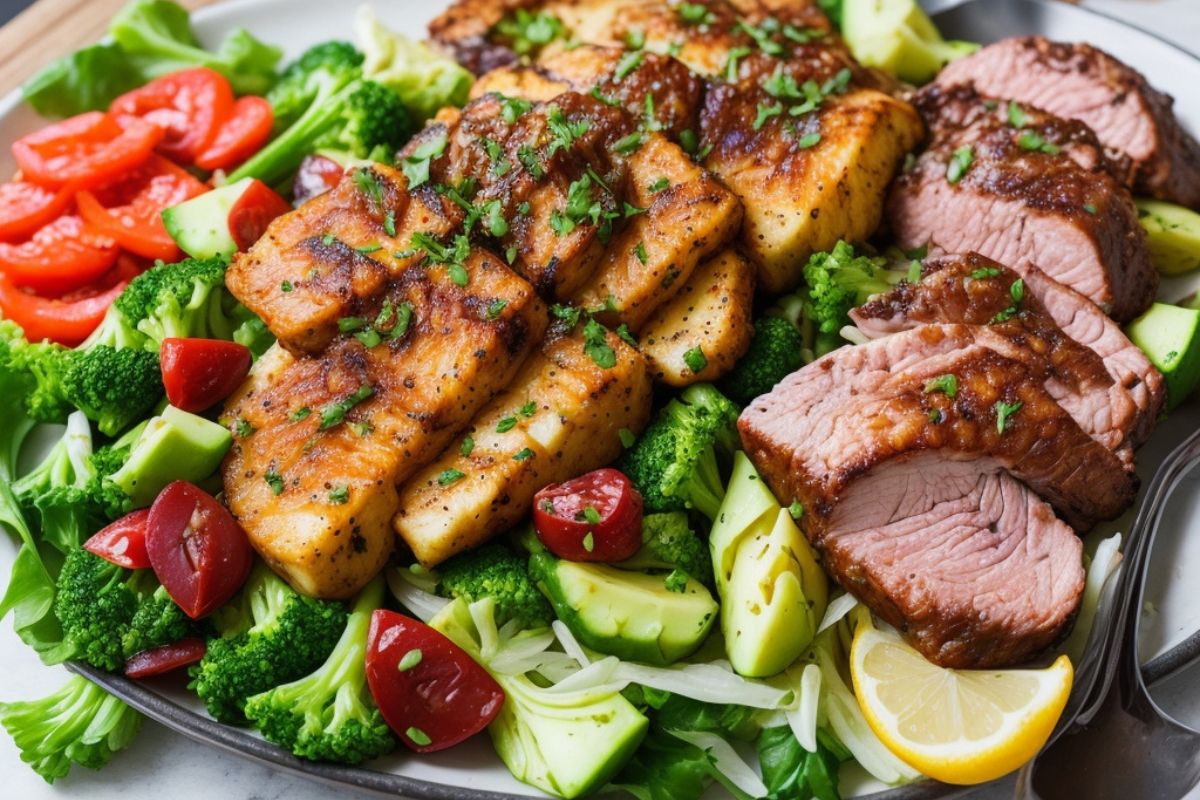
One of the keys to success on the keto diet is to plan and prepare your keto meals ahead of time. This can help you avoid temptation, save time and money, and enjoy delicious and nutritious food every day. Here are some tips on how to plan and prepare your keto meals:
- Plan your keto menu for the week: You can use a keto meal planner app, a keto cookbook, or a keto website to find keto recipes that suit your taste and budget. You can also create your own keto recipes by using keto-friendly ingredients and substituting high-carb foods with low-carb alternatives. For example, you can use cauliflower rice instead of regular rice, zucchini noodles instead of pasta, or almond flour instead of wheat flour. Try to include a variety of foods from different food groups, such as meat, fish, eggs, cheese, nuts, seeds, avocados, and low-carb vegetables and fruits. Aim for about 20-50 grams of net carbs per day, which is the total amount of carbs minus the fiber.
- Make a keto shopping list: Once you have your keto menu for the week, you can make a keto shopping list based on the ingredients you need. You can use a keto shopping list app, a keto grocery guide, or a keto website to find keto-friendly products and brands. You can also check the nutrition labels and ingredients lists of the products you buy, and avoid those that contain added sugar, starch, or other hidden carbs. You can shop online or at your local grocery store, farmer’s market, or health food store. Try to buy organic, grass-fed, and pasture-raised products whenever possible, as they are higher in quality and nutrients.
- Cook and store your keto meals: Once you have your keto ingredients, you can cook and store your keto meals for the week. You can use a keto meal prep app, a keto cookbook, or a keto website to find keto meal prep ideas and tips. You can also use your own creativity and skills to make your keto meals more appealing and satisfying. You can use different cooking methods, such as baking, roasting, grilling, frying, or steaming. You can use different seasonings, herbs, and spices to add flavor and variety. You can use different containers, such as glass jars, plastic bags, or bento boxes to store your keto meals. You can refrigerate or freeze your keto meals, depending on how long you want to keep them. You can reheat your keto meals in the microwave, oven, or stove, or enjoy them cold or at room temperature.
By planning and preparing your keto meals, you can make your keto diet easier and more enjoyable. You can also save time and money, and avoid wasting food. You can also improve your health and weight loss results, by eating fresh and homemade food that meets your keto macros and goals.
How to track your progress and adjust your keto macros
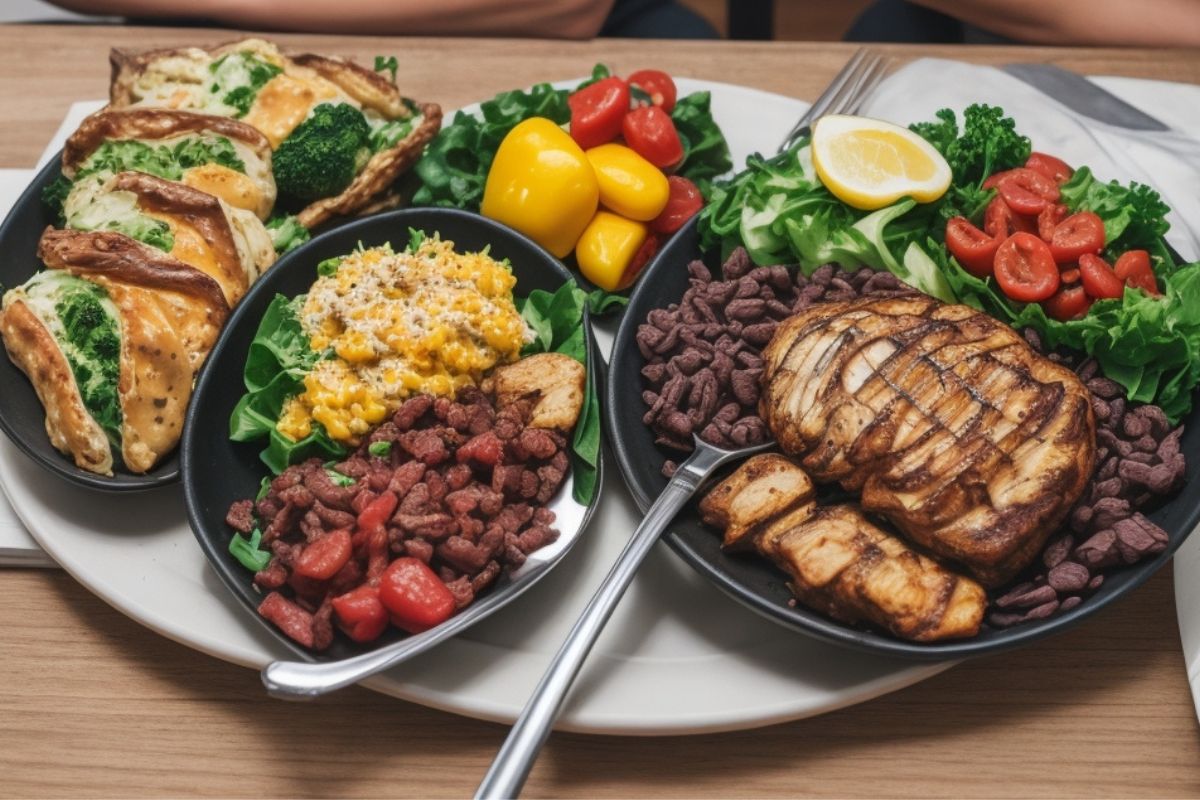
Another key to success on the keto diet is to track your progress and adjust your keto macros as needed. This can help you stay on track, measure your results, and optimize your keto diet for your goals. Here are some tips on how to track your progress and adjust your keto macros:
- Track your ketone levels: The best way to know if you are in ketosis is to measure your ketone levels. You can use a ketone meter, a ketone breath analyzer, or a ketone urine strip to test your ketone levels at home. You can also use a keto app, a keto website, or a keto calculator to estimate your ketone levels based on your keto macros and other factors. The optimal ketone level for weight loss and health is between 0.5 and 3.0 mmol/L, but it may vary depending on your individual needs and goals. You should aim to keep your ketone levels within this range, and adjust your keto macros accordingly. If your ketone levels are too low, you may need to lower your carb intake, increase your fat intake, or try intermittent fasting. If your ketone levels are too high, you may need to increase your carb intake, lower your fat intake, or consult your doctor.
- Track your weight and body fat percentage: The main goal of the keto diet is to lose weight and body fat, especially in the abdominal area. You can use a scale, a tape measure, a body fat caliper, or a body fat analyzer to measure your weight and body fat percentage at home. You can also use a keto app, a keto website, or a keto calculator to track your weight and body fat percentage over time. The ideal weight and body fat percentage for you depends on your age, gender, height, and body type, but you can use the BMI (body mass index) and the body fat percentage charts as a general guide. You should aim to lose about 1-2 pounds (0.5-1 kg) of weight and 0.5-1% of body fat per week, and adjust your keto macros accordingly. If your weight and body fat percentage are not changing, you may need to lower your calorie intake, increase your physical activity, or try a keto plateau breaker. If your weight and body fat percentage are dropping too fast, you may need to increase your calorie intake, lower your physical activity, or consult your doctor.
- Track your blood sugar and insulin levels: The keto diet can help you lower your blood sugar and insulin levels, which can improve your health and prevent or reverse diabetes. You can use a blood glucose meter, a continuous glucose monitor, or a blood test to measure your blood sugar and insulin levels at home. You can also use a keto app, a keto website, or a keto calculator to track your blood sugar and insulin levels over time. The normal blood sugar and insulin levels for you depend on your age, gender, health status, and medication use, but you can use the blood sugar and insulin charts as a general guide. You should aim to keep your blood sugar and insulin levels within the normal range, and adjust your keto macros accordingly. If your blood sugar and insulin levels are too high, you may need to lower your carb intake, increase your fiber intake, or consult your doctor. If your blood sugar and insulin levels are too low, you may need to increase your carb intake, lower your fiber intake, or consult your doctor.
By tracking your progress and adjusting your keto macros, you can make your keto diet more effective and personalized. You can also avoid keto pitfalls, such as keto flu, keto plateau, or keto rebound. You can also achieve your keto goals, such as weight loss, health improvement, or performance enhancement.
How to deal with keto side effects and challenges
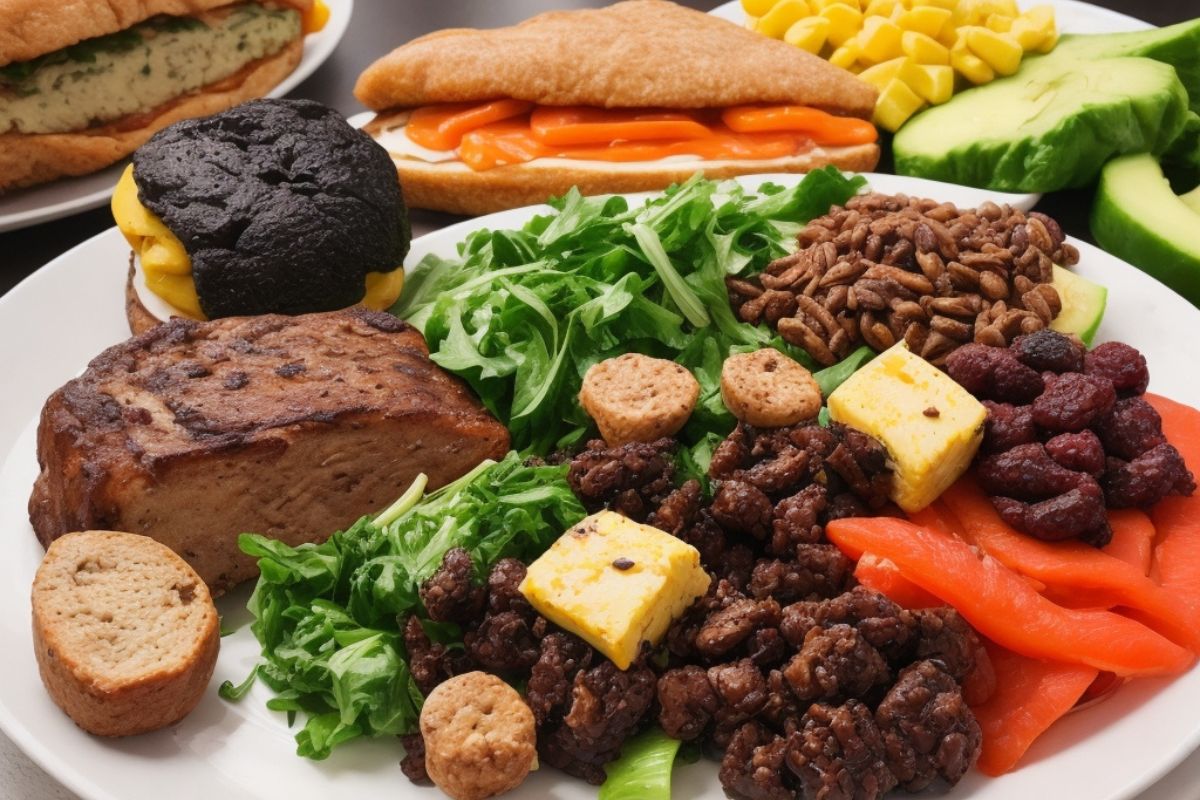
The keto diet can have some side effects and challenges, especially in the beginning, when your body is adapting to the new way of eating. These side effects and challenges can be unpleasant and discouraging, but they are usually temporary and manageable. Here are some tips on how to deal with keto side effects and challenges:
- Keto flu: The keto flu is a common set of symptoms that can occur when you first start the keto diet, such as headache, fatigue, nausea, and constipation. The keto flu is caused by the withdrawal of carbs and the transition to ketosis, which can affect your electrolyte balance, hydration, and digestion. To prevent or reduce the keto flu, you can do the following:
- Drink plenty of water and fluids, such as bone broth, herbal tea, or keto-friendly sports drinks, to stay hydrated and replenish your electrolytes
- Add more salt and minerals, such as sodium, potassium, magnesium, and calcium, to your diet, by using sea salt, Himalayan salt, or keto-friendly supplements
- Eat more fiber, such as psyllium husk, flax seeds, or chia seeds, to improve your bowel movements and prevent constipation
- Eat more fat, such as MCT oil, coconut oil, or butter, to boost your energy and ketone production
- Take it easy, by reducing your stress, getting enough sleep, and avoiding strenuous exercise, until your body adapts to the keto diet
- Keto breath: Keto breath is a fruity or metallic smell that can come from your mouth when you produce ketones. Keto breath is caused by the breakdown of acetoacetate, one of the ketone bodies, into acetone, which is exhaled through your breath. To get rid of or mask the keto breath, you can do the following:
- Brush your teeth and tongue, floss your teeth, and use mouthwash, to keep your oral hygiene and freshness
- Chew sugar-free gum or mints, or use breath spray, to cover up the keto breath smell
- Drink more water and fluids, to flush out the excess ketones and acetone from your body
- Eat more carbs, but not too much, to lower your ketone levels and reduce the keto breath intensity
- Keto rash: Keto rash is a rare but possible skin reaction that can cause itching and redness. Keto rash is caused by the inflammation of the sweat glands, which can be triggered by the increased ketone levels, the decreased insulin levels, or the changes in the gut microbiome. To prevent or treat the keto rash, you can do the following:
- Avoid sweating, by staying cool, wearing loose and breathable clothing, and showering after exercise, to prevent the irritation of the skin
- Apply anti-itch cream, lotion, or ointment, such as hydrocortisone, calamine, or aloe vera, to soothe and heal the skin
- Take antihistamines, such as Benadryl, Zyrtec, or Claritin, to reduce the inflammation and itching of the skin
- Eat more carbs, but not too much, to lower your ketone levels and reduce the keto rash severity
- Consult your doctor, if the keto rash persists or worsens, to get a proper diagnosis and treatment
- Ketoacidosis: Ketoacidosis is a dangerous condition that can occur in people with type 1 diabetes or alcoholism, when the level of ketones in the blood becomes too high and causes the blood to become acidic. Ketoacidosis can cause symptoms such as nausea, vomiting, abdominal pain, confusion, and coma. Ketoacidosis can be life-threatening if not treated promptly. To prevent or treat ketoacidosis, you can do the following:
- Monitor your blood sugar and ketone levels, by using a blood glucose meter and a ketone meter, to keep them within the normal range
- Take your insulin and medication, as prescribed by your doctor, to regulate your blood sugar and ketone levels
- Drink plenty of water and fluids, to prevent dehydration and dilute the ketones and acid in your blood
- Eat more carbs, but not too much, to lower your ketone levels and raise your blood pH
- Seek emergency medical attention, if you experience any signs of ketoacidosis, such as rapid breathing, fruity breath, or loss of consciousness
By dealing with keto side effects and challenges, you can make your keto diet more comfortable and sustainable. You can also avoid serious complications and health risks, and enjoy the benefits and rewards of the keto diet.
How to enjoy the keto lifestyle and stay motivated
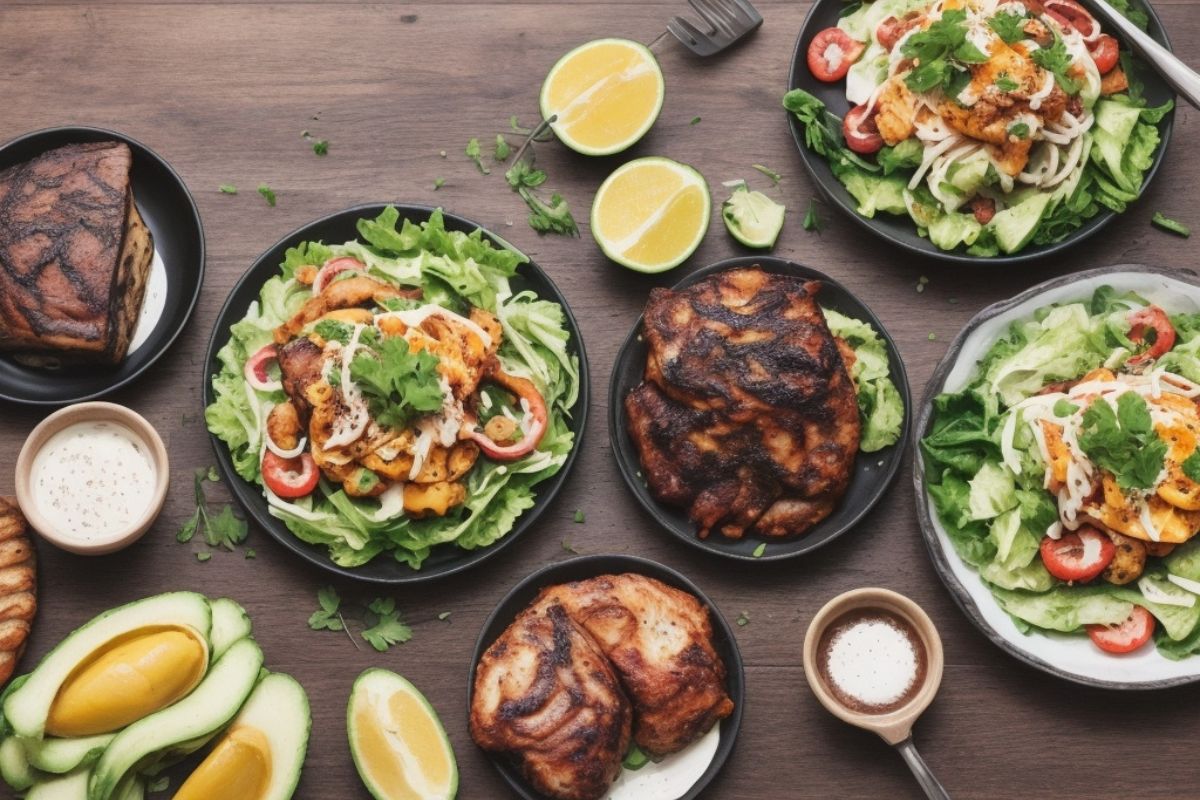
The keto diet is more than just a diet. It’s a lifestyle that can help you improve your health, happiness, and well-being. However, the keto lifestyle can also be challenging and boring, especially if you feel deprived, isolated, or discouraged. Here are some tips on how to enjoy the keto lifestyle and stay motivated:
- Find your keto community: The keto lifestyle can be lonely and difficult, especially if you don’t have the support and understanding of your family, friends, or coworkers. That’s why it’s important to find your keto community, where you can connect with other keto enthusiasts, share your experiences and challenges, and get advice and inspiration. You can find your keto community online, such as on keto forums, blogs, podcasts, or social media groups. You can also find your keto community offline, such as on keto meetups, events, or clubs. By finding your keto community, you can make your keto lifestyle more fun and social, and less lonely and stressful.
- Treat yourself with keto treats: The keto lifestyle can be restrictive and boring, especially if you miss your favorite foods, such as pizza, pasta, bread, or ice cream. That’s why it’s important to treat yourself with keto treats, where you can indulge in your cravings, without breaking your keto macros. You can make your own keto treats, by using keto-friendly ingredients and recipes, such as keto pizza, keto pasta, keto bread, or keto ice cream. You can also buy keto treats, by using keto-friendly products and brands, such as keto snacks, keto bars, keto cookies, or keto chocolates. By treating yourself with keto treats, you can make your keto lifestyle more satisfying and enjoyable, and less restrictive and boring.
- Celebrate your keto achievements: The keto lifestyle can be rewarding and empowering, especially if you see your progress and results, such as weight loss, health improvement, or performance enhancement. That’s why it’s important to celebrate your keto achievements, where you can acknowledge your efforts and accomplishments, and reward yourself with something meaningful and positive. You can celebrate your keto achievements, by using keto-friendly ways and ideas, such as buying new clothes, taking a trip, getting a massage, or donating to a charity. You can also celebrate your keto achievements, by using non-keto-friendly ways and ideas, such as having a cheat meal, a cheat day, or a cheat week, but only occasionally and moderately. By celebrating your keto achievements, you can make your keto lifestyle more motivating and inspiring, and less frustrating and discouraging.
By enjoying the keto lifestyle and staying motivated, you can make your keto diet more sustainable and successful. You can also improve your quality of life, and achieve your personal and professional goals. Remember, the keto lifestyle is not a temporary fix, but a long-term solution. You can always adapt it to your needs and preferences, and make it your own.
Conclusion
The keto diet is a low-carb, high-fat diet that aims to put your body into a metabolic state called ketosis. Ketosis is when your body burns fat instead of glucose (sugar) for energy. This can help you lose weight, improve your health, and boost your brain function.
To enter ketosis, you need to limit your carb intake to about 20-50 grams per day, depending on your individual needs and goals. You also need to increase your fat intake to about 70-80% of your calories, and moderate your protein intake to about 20-25% of your calories.
When you eat this way, your liver converts fat into ketone bodies, which are molecules that can be used by your brain and other organs as an alternative fuel source. Ketones have many benefits, such as:
- Suppressing hunger hormones and increasing satiety hormones, which can help you eat less and lose weight
- Enhancing cognitive function, memory, and mood, by providing a steady and efficient energy supply to your brain
- Reducing inflammation, oxidative stress, and insulin resistance, which can lower your risk of chronic diseases, such as diabetes, heart disease, and cancer
- Boosting your athletic performance, endurance, and recovery, by sparing your muscle glycogen and increasing your fat oxidation
However, ketosis is not easy to achieve and maintain. It requires a lot of discipline, planning, and adaptation. You also need to be aware of the potential side effects and challenges of the keto diet, such as:
- Keto flu, which is a temporary set of symptoms that can occur when you first start the keto diet, such as headache, fatigue, nausea, and constipation
- Keto breath, which is a fruity or metallic smell that can come from your mouth when you produce ketones
- Keto rash, which is a rare but possible skin reaction that can cause itching and redness
- Ketoacidosis, which is a dangerous condition that can occur in people with type 1 diabetes or alcoholism, when the level of ketones in the blood becomes too high and causes the blood to become acidic
These side effects and challenges can be prevented or managed by following some simple tips and strategies, which we’ll cover in this article.
The keto diet has been shown to have many benefits for various health conditions, such as:
- Obesity and overweight: The keto diet can help you lose weight and body fat, especially in the abdominal area, by reducing your appetite, increasing your metabolism, and preserving your muscle mass
- Type 2 diabetes and prediabetes: The keto diet can help you lower your blood sugar and insulin levels, improve your insulin sensitivity, and reverse your diabetes or prevent it from developing
- Epilepsy and seizures: The keto diet can help you reduce the frequency and severity of your seizures, especially in children with drug-resistant epilepsy
- Alzheimer’s disease and dementia: The keto diet can help you protect your brain from cognitive decline, improve your memory and mental clarity, and slow down the progression of Alzheimer’s disease
- Parkinson’s disease and other neurological disorders: The keto diet can help you improve your motor function, reduce your tremors and stiffness, and alleviate your symptoms of Parkinson’s disease and other neurological disorders
- Polycystic ovary syndrome (PCOS) and infertility: The keto diet can help you balance your hormones, restore your ovulation and menstrual cycles, and improve your fertility and chances of getting pregnant
- Acne and skin problems: The keto diet can help you clear your skin, reduce your inflammation, and prevent acne breakouts and other skin problems
However, the keto diet is not for everyone. It may have some risks or drawbacks for certain people, such as:
- People with type 1 diabetes or pancreatic insufficiency: The keto diet may increase the risk of ketoacidosis, which can be life-threatening if not treated promptly. People with type 1 diabetes or pancreatic insufficiency should consult their doctor before starting the keto diet and monitor their ketone levels closely
- People with kidney disease or kidney stones: The keto diet may increase the risk of kidney problems, such as kidney stones, kidney damage, or kidney failure. People with kidney disease or kidney stones should consult their doctor before starting the keto diet and limit their protein intake
- People with liver disease or gallbladder problems: The keto diet may increase the risk of liver problems, such as fatty liver, liver damage, or liver failure. People with liver disease or gallbladder problems should consult their doctor before starting the keto diet and limit their fat intake
- People with heart disease or high cholesterol: The keto diet may increase the risk of heart problems, such as arrhythmias, heart attack, or stroke. People with heart disease or high cholesterol should consult their doctor before starting the keto diet and choose healthy fats, such as olive oil, avocado, nuts, and seeds
- People with thyroid disorders or hormonal imbalances: The keto diet may affect the thyroid function and hormone levels, which can cause symptoms such as fatigue, hair loss, mood swings, or menstrual irregularities. People with thyroid disorders or hormonal imbalances should consult their doctor before starting the keto diet and monitor their thyroid and hormone levels regularly
- People with eating disorders or a history of disordered eating: The keto diet may trigger or worsen eating disorders, such as anorexia, bulimia, or binge eating. People with eating disorders or a history of disordered eating should consult their doctor and a therapist before starting the keto diet and seek professional help if they experience any signs of relapse
- Pregnant or breastfeeding women: The keto diet may not provide enough nutrients and calories for the mother and the baby, and may affect the milk production and quality. Pregnant or breastfeeding women should consult their doctor before starting the keto diet and follow a balanced and varied diet that meets their needs and preferences
The bottom line is that the keto diet can be beneficial for many people, but it may not be suitable or safe for everyone. Always consult your doctor before starting the keto diet, especially if you have any medical conditions or take any medications. And remember, the keto diet is not a one-size-fits-all solution. You can always modify it to fit your goals, needs, and preferences.
Follow our social networks facebook, pinterest and see more tips
